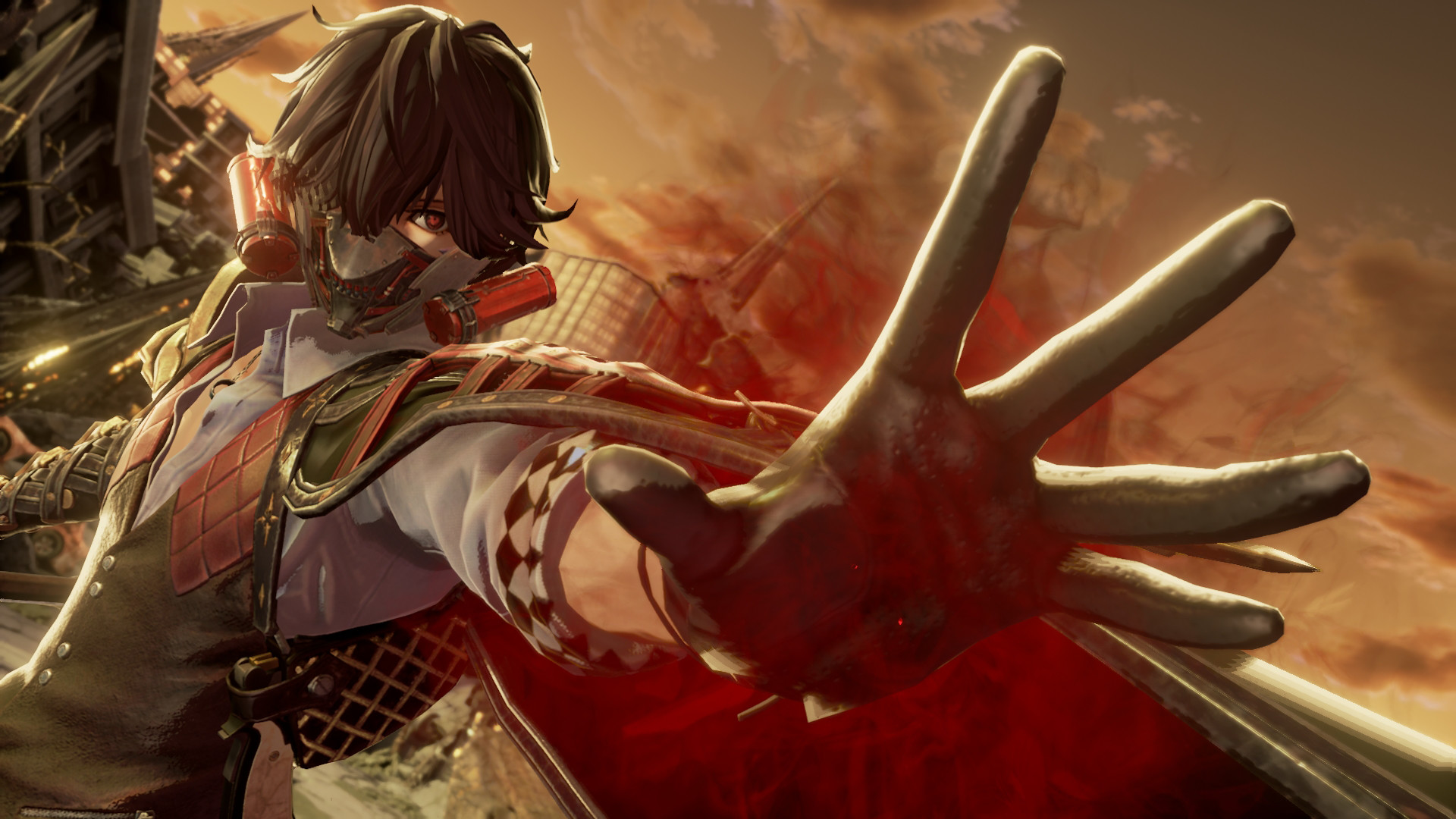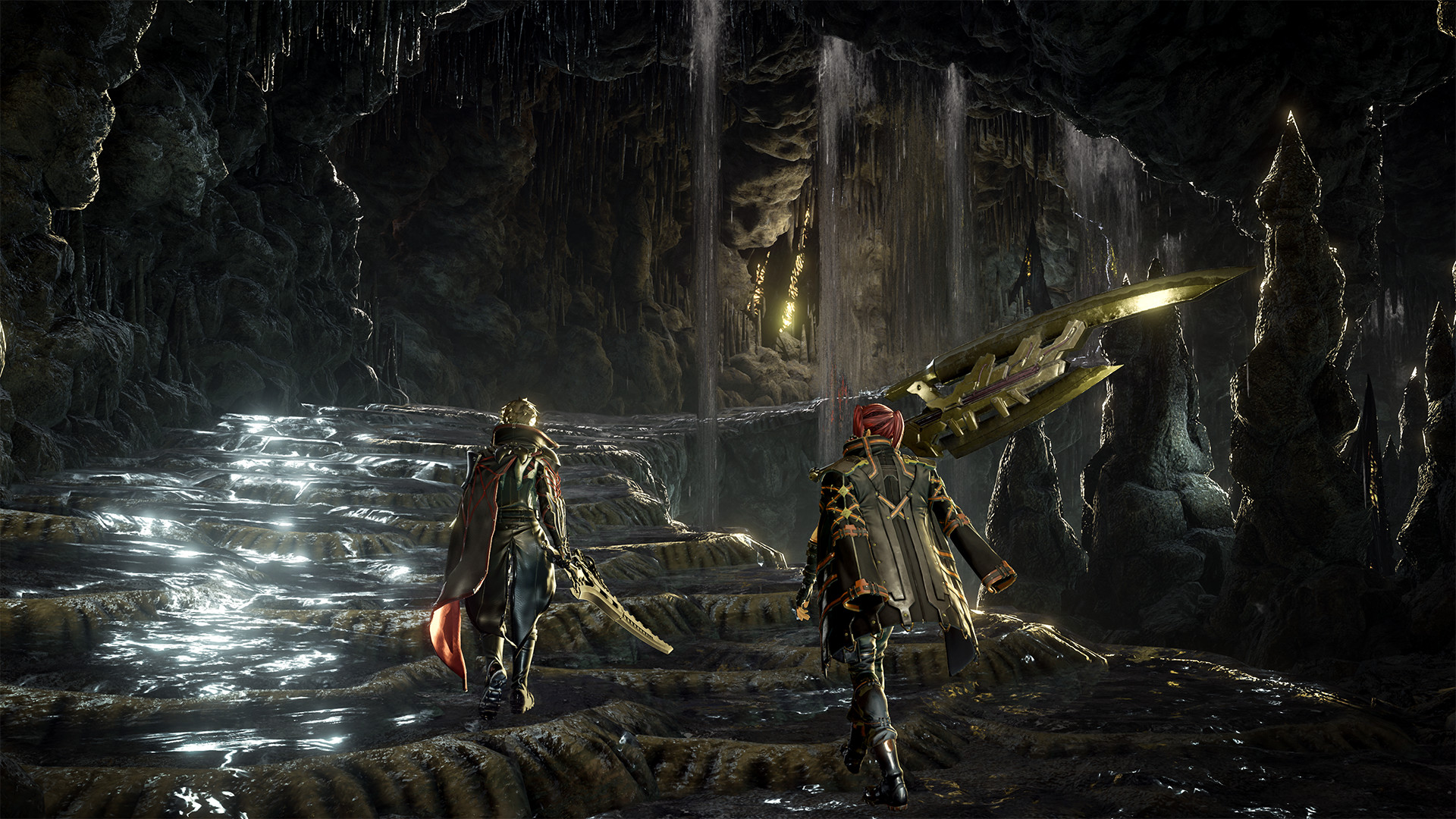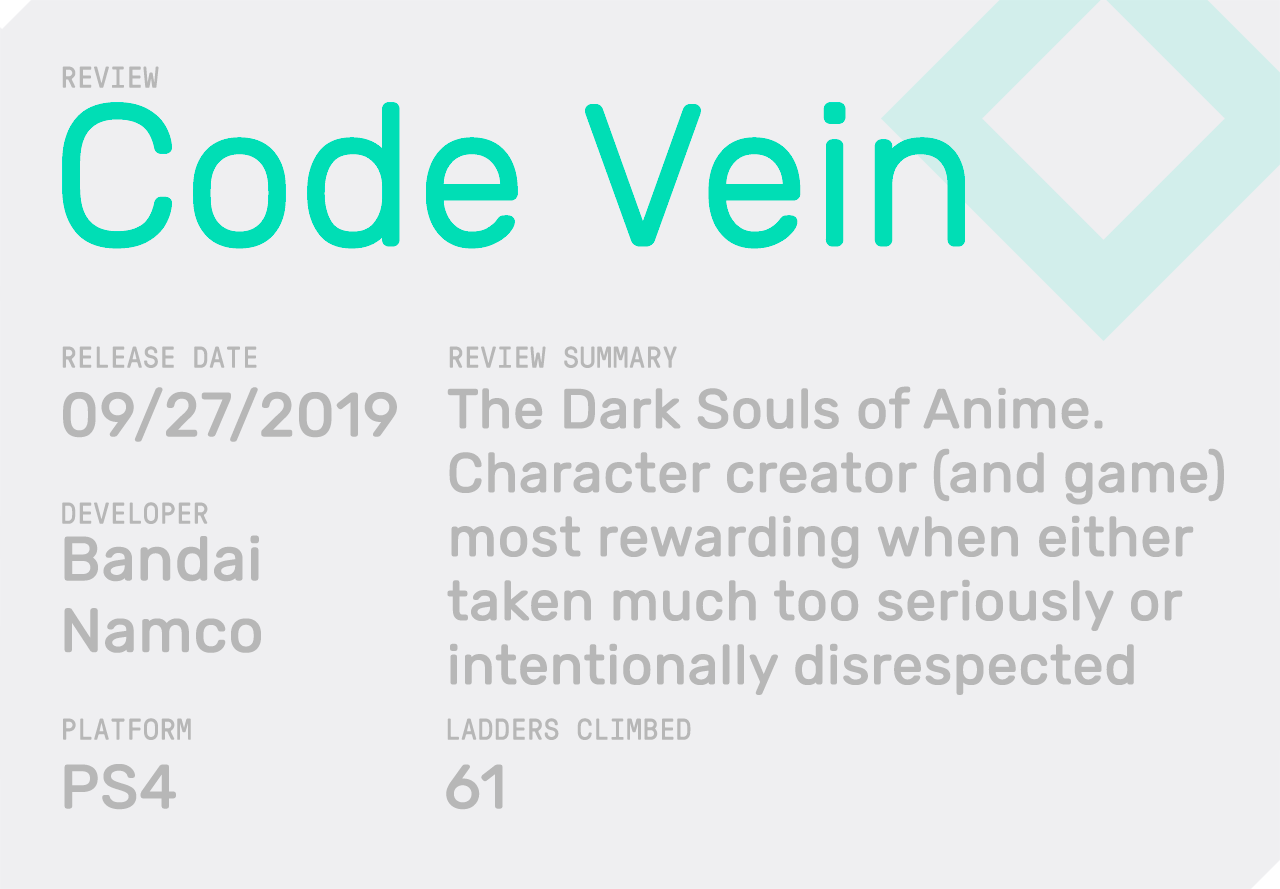‘Code Vein’ Injects Anime Into the Heart of Dark Souls
Credit to Author: Aevee Bee| Date: Thu, 26 Sep 2019 15:29:34 +0000
Code Vein is the Dark Souls of 2003 anime music videos with nu-metal soundtracks. That may already be enough of a review for you. How anime is it, and how Dark Souls? Well, there are doors that only open from one direction so as to indicate a future shortcut you will unlock later in the level, and it takes twelve hours of playtime before encountering a female character simultaneously wearing both pants and a shirt. You can circle strafe around enemies and backstab them, and everyone in the game is a hot tortured science vampire whose melodramatic backstory is unveiled through crystals made out of blood.
All of which is to say that Code Vein is religiously adherent to both the tropes of Dark Souls and of action anime post Code Geass and Attack on Titan, but is at its best when it is letting you make your own fun by breaking its self-serious veneer and the ostensible difficulty of a Souls-inspired game. The breaking of the former is enabled by an overly permissive character creator comparable to Soul Calibur VI’s, and the latter by allowing the player to switch at will between an exhaustive library of character builds. The very fast and very deadly combat requests politely that you take it as seriously as the story, but it doesn’t mind how indulgently you engage and doesn’t protest if you find a way to break it.
In Code Vein you have a Blood Code, the first of many things in this universe that have cool names with the word "blood" in them. The Souls Standard for increasing character power is to permanently increase each (or some, from a long list) of the player's stats, customizing them in specific and irreversible ways. Code Vein makes leveling up a generic increase in power while the specific Blood Code you equip shifts your emphasis proportionally to whatever that Code specializes in. If you want to cast spells, you equip a code built for that. As soon as you have trouble with something (or get bored), you can swap your code and swing around a big two handed hammer instead. And because Code Vein is Code Vein, you learn new abilities and get new codes by experiencing tragic and emotional flashbacks through crystallized memories left behind from previous deaths experienced by your immortal friends.
So yes, the story is very, very anime, swelling melodrama at every turn and filled with worldbuilding that makes absolutely no sense and is extremely cool. Everyone has to wear a cool-looking gas mask to protect themselves from a toxic miasma that will turn them into even more unhinged immortal zombies than they already are, but absolutely no one has to wear pants.
A good way to understand Code Vein's aesthetic priorities are the game’s Blood Veils (like the one seen in the trailer above). Whenever you land a parry or backstab, a cinematic plays in which a mask forms over your character's face and you grow claws or a tail and these horrible biomechanical organ tears an enormous amount of blood out of its victim. Hey wait, if it's showing this cool mask mechanically form over your face… where did your gas mask go? Did it just vanish off your face before the camera shifted so this scene would look cool? Code Vein 1000% does not care about how weird that looks—it wants to show your character looking bloody, goth, and tortured with totally awesome bloodlust and power.
This is as opposite from Dark Souls storytelling as you can get, and if you are not ready for sad piano music to play over a somber flashback of the impoverished, brutal, and scarce lives that awesome science vampires in the post-apocalypse experience, you probably have never played a video game with an anime character in it before and may not enjoy this story. If you secretly are a really big sucker for awesome goths having big feelings and dying tragically (even though they're immortal by definition), then welcome to the video game that will let you design the OC of your adolescent dreams to experience exactly that.

Even if you hate big corny feelings and childish things, you are able to take the story exactly as seriously as your character design is ridiculous. For a game so self-serious to allow the main character in every cutscene to look like a 12-year-old's notebook doodle is very generous and permissive, and the best choice to cover both sincere and ironic investment. More games could save themselves this way, and Code Vein doing its own thing without stopping you from doing yours is threaded throughout its approach to both character design as aesthetic and character design as mechanic.
Yet the hallmarks of Dark Souls storytelling do slip through in some surprising ways. While Code Vein definitely loves its cutscenes, and while the developers want to be sure you know what all of the Proper Nouns are, there is some surprising restraint in how they deliver the details of the world itself to you. Consider the Queen: About 12 hours into the game, I knew for sure who she was. But by that time I’d seen "Queenslayer" on many item descriptions, and “made with help from the queen” on many others. At one time, it seemed like she was everyone’s hope, but that ended a long time ago, and then she was dead. People had been talking around her the whole game, and I genuinely was pretty interested in knowing what her deal is because I had enough breathing room to get curious and wonder for myself before expository dialogue washed over me.
It also helps that those cutscenes that it loves are about its cool hot characters, and that its storytelling lets its adolescent but genuine world of tragic vampire soldiers actually feel like a place. I’m a little embarrassed to admit I became more invested in the story than I intended, and no small part of that due to growing attachment to a main character we had initially made to see how silly the game would let us be

Unfortunately, such worldbuilding is not well achieved by the level design in Code Vein. The meticulous architecture of From Software is a large part of what makes the Souls series interesting—enemies are designed in tandem with the places they exist in, so thematically and mechanically it can feel as if they live there. Each intersection and hallway is a planned situation for a new sort of trap or conditional encounter with an enemy. Code Vein, on the other hand, has rigid, linear, and technically functional design that lacks the convincing illusion of being a real place, and the quirks and secrets are so mandatory that I was often stuck overlooking some odd thing I had to do to progress. Dark Souls would just cheerfully let you miss a fun secret and take the longest and most annoying way around. Mean, maybe, but I almost never feel stuck in those games.
Code Vein shifts from intricate setpieces to open halls and arenas for big fights against swarms of mad-max vampire zombies and 12-foot tall goth knights, maybe because that's where it feels comfortable. You can feel how strong the belief in anime is even from the combat design: weapons are huge and fast—the lightest and fastest option in the game is a one handed sword about as long as the wielder. There is no attempt to make them feel realistic and every attempt to make them feel cool.
Enemies match this design priority, and while the game is built well to take them on, Code Vein is maybe the worst about one of the most annoying features of this genre: enemies with huge weapons that swings back so much the hitbox is effectively a 360 sphere that extends around the boss and seems to far outreach the visible length of the weapon they're swinging. This is almost certainly an intentional design choice for better game balance, even if the execution is frustrating; enemy attacks that hit behind them (and encounters with multiple enemies) are basically the only thing that prevents a pair of players from distracting and backstabbing every enemy in the game to death (and that's still a viable strategy, it's just not free).

This is especially a consideration in Code Vein because it there isn't any sort of limit on the co-op feature, and the default state of the game is to have an AI companion with you at all times. They’re all very sad and tortured but endearing and kind, and treat you like their best friend whether you look like the sort of character who belongs in the game or the sort of character who better belongs on a rave flyer. They also make some of what would be otherwise unforgivable nonsense a bit more forgivable. You can save someone from death by transferring a bit of your own life to them, and the AI uses this automatically to resurrect you if it's not on cooldown, which has saved me from more than a few deaths that felt wildly unfair. The resulting balance is rough around the edges but very co-op friendly. And engaging for a game that emphasizes straightforward battles against freaky mutants and heavy metal knights who fight quickly and chaotically and don’t leave a lot of room to breathe.
I appreciate a game that says yes to me—this is easily the best part of Dark Souls. For a game with such an intimidating reputation for difficulty, it is also a game that's fine with you standing in a corner and shooting a guy who can't hit you with an arrow, exploiting the AI, and pushing extremely tough demons off of cliffs. A lot of new Souls-y games have left me cold with their lack of respect and understanding of how wonderful the janky and comical can be, so eager are they to make combat even more reflex-based and difficult. I always thought part of the deal with Dark Souls was that it was okay with the player being as annoying and unfair as the game itself got to be.
So I appreciate that Code Vein, in exchange for a smoother and very fast combat system a bit closer to the Bloodborne end of the spectrum, gives you more control than probably it should over what your character looks like and what they can do. Combat is extremely flexible and quite exploitable, and you are able to insert yourself into cutscenes as either the self-serious DeviantArt edgelord the game intends or a literal clown. If you want to stack the most min-maxed possible strength build and take a quarter of a boss’s life bar with one hit of your hammer, delivered by a bald man with ten huge neon spikes coming out of his face you have named “Rave Pinhead,” you can do that. If you want to make your favorite OC from when you were fourteen who had one angel wing and one devil wing and had fire and ice powers and wasn’t just Dizzy from Guilty Gear because she had different hair, OBVIOUSLY… well, you can do that too. And Code Vein is better for it.
In 2019, I don’t need any more revisionist celebrations of high difficulty and tight dodge timings. I don’t need games without room for silliness or self-expression. What I’ve needed more of, and what Code Vein is happy to give me, is more of that good jank, and permission to have my own fun with it.
Have thoughts? Swing by the Waypoint forums to share them!
This article originally appeared on VICE US.